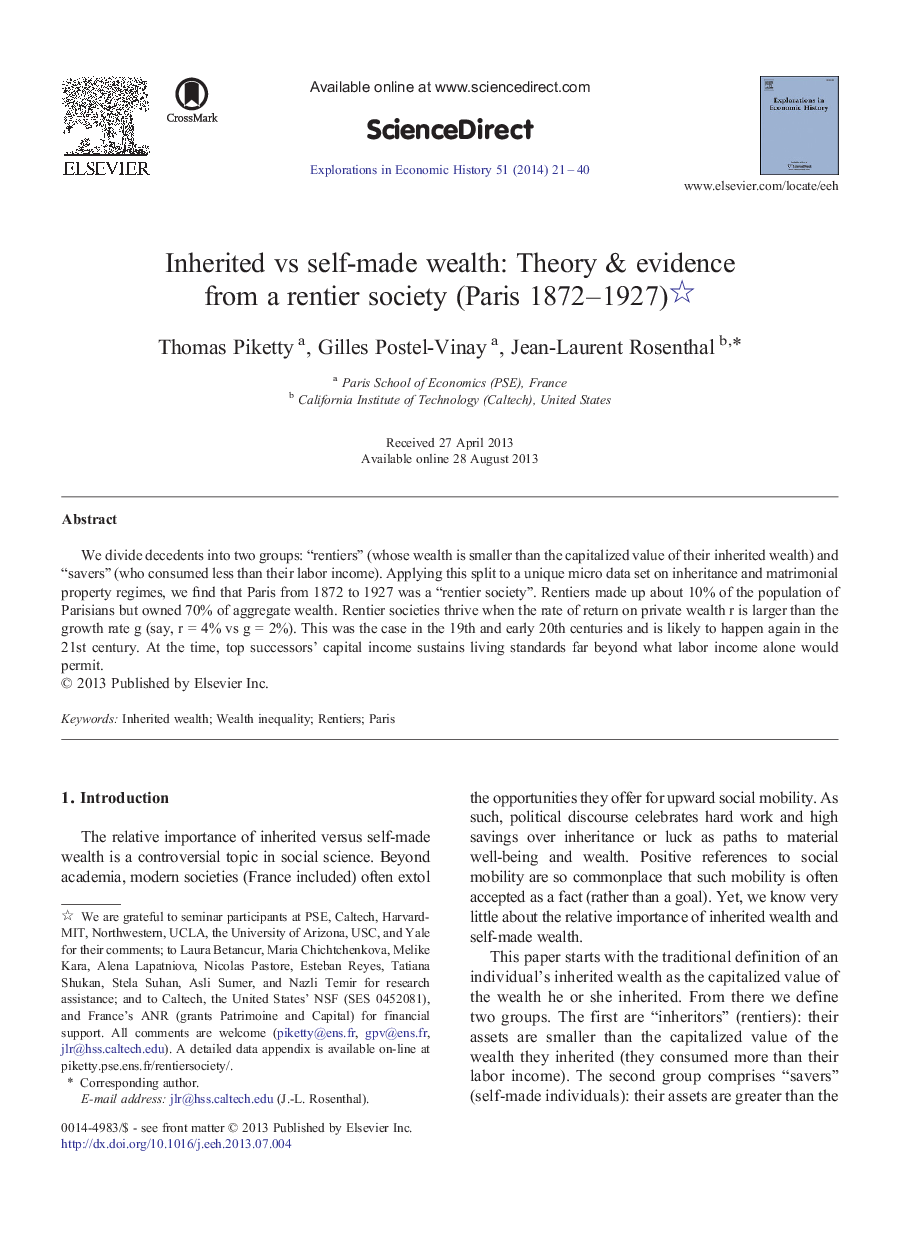| کد مقاله | کد نشریه | سال انتشار | مقاله انگلیسی | نسخه تمام متن |
|---|---|---|---|---|
| 5068746 | 1476976 | 2014 | 20 صفحه PDF | دانلود رایگان |

- Data set of more than 160,000 individual estate tax records for Paris 1870â1922.
- Separate savers (who accumulate more than the capitalized value of what they inherited) from rentiers (who accumulate less).
- The share of inherited wealth was high 70%.
- The share of rentiers were remarkably stable before the Great Depression.
- Inherited wealth critical in wealth accumulation most likely far more than life cycle savings.
We divide decedents into two groups: “rentiers" (whose wealth is smaller than the capitalized value of their inherited wealth) and “savers” (who consumed less than their labor income). Applying this split to a unique micro data set on inheritance and matrimonial property regimes, we find that Paris from 1872 to 1927 was a “rentier society”. Rentiers made up about 10% of the population of Parisians but owned 70% of aggregate wealth. Rentier societies thrive when the rate of return on private wealth r is larger than the growth rate g (say, r = 4% vs g = 2%). This was the case in the 19th and early 20th centuries and is likely to happen again in the 21st century. At the time, top successors' capital income sustains living standards far beyond what labor income alone would permit.
Journal: Explorations in Economic History - Volume 51, January 2014, Pages 21-40